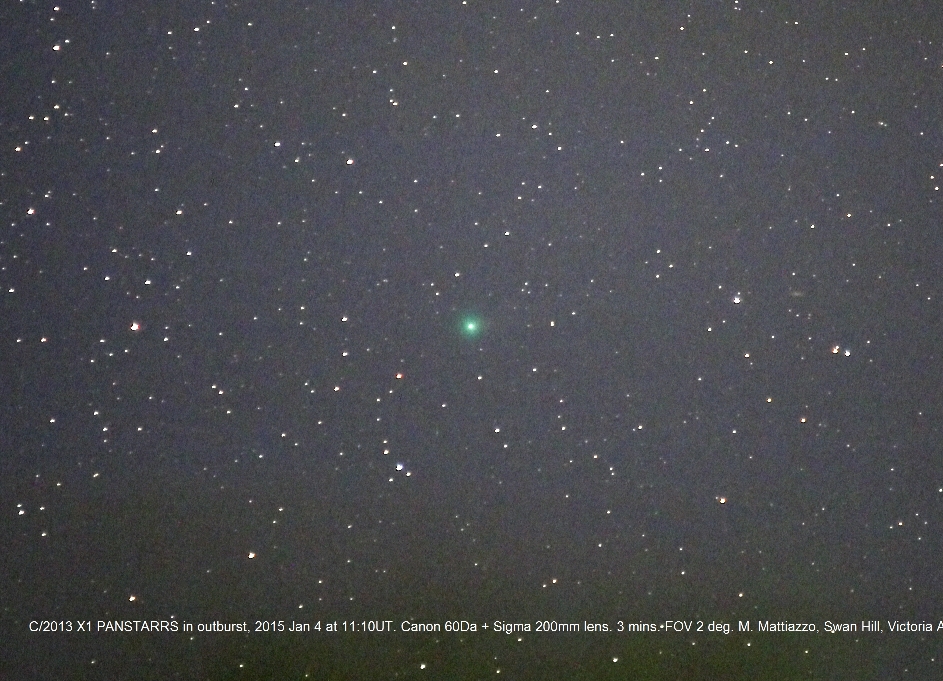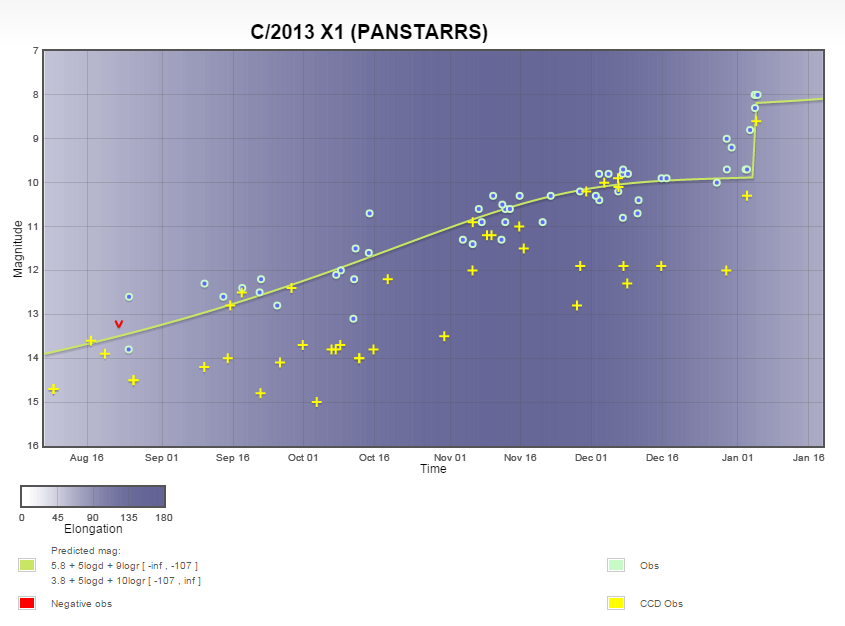CometBase Alert N4. Comet C/2013 X1 (PANSTARRS) in outburst.
Comet C/2013 X1 (PANSTARRS) indicates increased activity since the end of 2015. On the 21st of December and 3rd of January comet has undergone outbursts. At present C/2013 X1 reached 8.0 mag (it's by 1.7 magnitudes or 5 times brighter than forecasts).
Michael Linnolt (Ocean View, Hawaii; NELM: 5.0) who was the first reported about brightness increased, observed the comet on December 21st, 2015 using binoculars 20x60 under the Moonlight and clear-sky conditions. He estimated magnitude as 9.0 and coma diameter 4’. Prior to this the comet was observed as an object approximately one magnitude fainter. The outburst was confirmed by other observers like Maik Meyer (Germany); the visual coma diameter was 4-5’ at that time. By the beginning of January 2016 the brightness dropped to 9.5 mag or slightly below, and on January 3rd, 2016 comet has gone into outburst which was also first reported by Hawaiian observer Michael Linnolt. Using binoculars 20x60 he estimated brightness as 8.4 mag and coma diameter 9’. Shortly the outburst was confirmed by other observers. Australian observer Michael Mattiazzo (2016 Jan 4.46 UT; m1=8.2, Dia=6’, DC=5) who reported that comet reveals large and moderately condensed coma, was also among them. The latest estimates indicate that comet’s brightness reached 8.0 mag.
Comet C/2013 X1 (PANSTARRS) requires regular and accurate observations! Use as a reference Tycho-2 star catalogue for your visual observations and submit your observations to CometBase!
Thomas Lehmann (Weimar, Germany) published his photometric behavior analysis of C/2013 X1 during year 2015. He stated that the outburst occurred on the 21st of December may not have happened.
Currently C/2013 X1 (PANSTARRS) is directed towards the Sun in the sky locating in the constellation Pegasus. Approximately for six weeks comet will be available for observations in the Northern Hemisphere (until mid-February), being unreachable afterwards due to small elongations. It's expected that comet will reach 6-7 mag during summer 2016 and can be observed in the middle latitudes of the Northern Hemisphere.
© M. Mattiazzo
back

